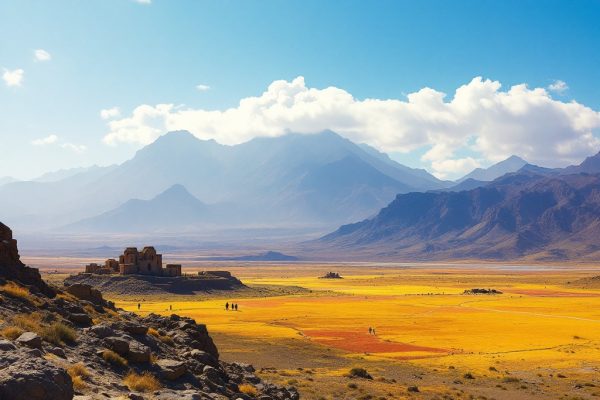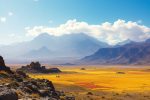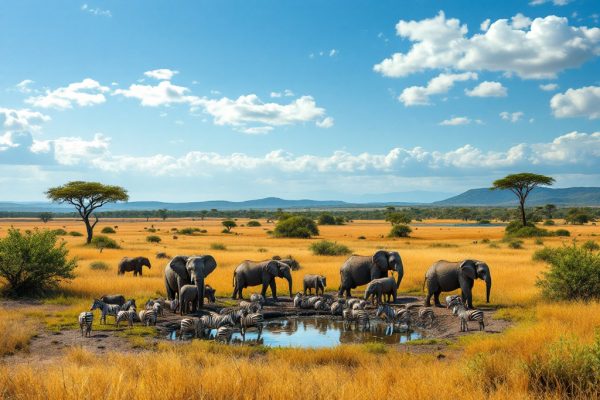What Is the Weather in Nairobi, Kenya, Throughout the Year
Discover Nairobi’s surprisingly pleasant subtropical highland climate! Enjoy comfortable temperatures year-round, typically between 54°F and 81°F, with warm, short summers and cool, dry winters. Explore this vibrant city during the dry seasons (June-September, January-February) for optimal safari conditions. Learn about Nairobi’s distinct wet and dry periods, average rainfall, and pack accordingly for an unforgettable experience. Plan your trip now!
Important information

- Nairobi has a subtropical highland climate with mild temperatures year-round, typically ranging from 54°F (12°C) to 81°F (27°C).
- The city experiences two rainy seasons: a long one from March to May and a shorter one from October to December. Dry seasons are from June to September and January to February.
- April is the wettest month (7.1 inches/180mm of rain on average), while July is the driest (0.7 inches/18mm).
- Nairobi enjoys approximately 2,440 hours of sunshine annually. While it has around 115 clear days each year, it experiences approximately 250 overcast days.
- The average humidity is a comfortable 69%.
Climate and Average Weather Year Round in Nairobi, Kenya
Nairobi, Kenya has a comfortable subtropical highland climate. Summers are short, warm, and often overcast. Winters are also short, cool, dry, and partly cloudy. Temperatures usually stay between 54°F and 81°F, rarely falling below 50°F or rising above 84°F.
Annual Weather Averages and Seasonal Variations
Nairobi enjoys a comfortable, subtropical highland climate, characterized by mild temperatures throughout the year. The city experiences distinct wet and dry seasons, receiving about 29 inches of annual rainfall. The long rains typically fall from March to May, with shorter rainy periods from October to December. Drier weather prevails from June to September and January to February. Nairobi’s warm season is short, lasting approximately two months, while its cooler season extends a bit longer, to around two and a half months. The city’s unique climate is also shaped by its location.
Average Temperature in Nairobi
Nairobi enjoys a pleasant average temperature of 21°C. Daytime temperatures typically range from 20°C to 26°C, while nighttime lows average a cool 10°C. The warmest months are January through March, while June to August is the coolest period. At 1,795 meters above sea level, Nairobi’s elevation contributes significantly to its moderate climate year-round.
Precipitation Patterns in Nairobi
Nairobi’s climate features two distinct rainy seasons: a long, wet season and a shorter, drier one. The long rainy season extends from mid-March to mid-October (approximately seven months), with rainfall exceeding 2.7 inches. The shorter, drier season lasts a little over five months, from mid-October to mid-March, receiving less than 1.2 inches of rain.
Nairobi’s Rainy Seasons
These seasons correspond with the “long rains” (March to May) and the “short rains” (October to December).
Dry Seasons
Dry periods typically occur from June to September and January to February.
April experiences the highest rainfall (7.1 inches on average), contrasting sharply with July’s low of 0.7 inches. Rainfall peaks in April and November, with April receiving a substantial 7.1 inches and November a respectable 4.1 inches.
Humidity and Cloud Cover
Nairobi boasts a comfortable average humidity of 69%, providing a welcome break from the heat. While the city experiences around 115 clear days each year, overcast conditions are more common, with approximately 250 overcast days annually.
Wind Speed and Direction
Nairobi experiences distinct seasonal winds, with March being the windiest month.
Daylight and Sunshine Hours in Nairobi
Nairobi enjoys approximately 2,440 hours of sunshine annually, resulting in a warm, subtropical highland climate. This makes it a truly radiant city.
Impact of Nairobi’s Weather on Travel and Activities
Nairobi’s pleasant, mild climate makes it an excellent travel destination throughout the year. However, consider the two rainy seasons (March to May and October to December) when planning outdoor activities. Packing rain gear is recommended for these times. The dry seasons (June to September and January to February) offer perfect conditions for safaris and city tours. Light clothing is ideal for Nairobi’s warm days, while a jacket will provide comfort during the cooler evenings. Comfortable walking shoes are essential for exploring the city.
Nairobi’s Climate
Nairobi enjoys a pleasant, mild climate year-round, making it a fantastic travel destination any time. However, it’s wise to be aware of the two rainy seasons.
- Rainy Seasons: March to May and October to December.
Packing rain gear is highly recommended for these periods.
Best Time to Visit
The dry seasons offer the most favorable conditions for outdoor activities like safaris and city tours.
- Dry Seasons: June to September and January to February.
What to Pack
- Light Clothing: Perfect for Nairobi’s warm days.
- Jacket: Provides comfort during the cooler evenings.
- Comfortable Walking Shoes: Essential for exploring the city’s attractions.













